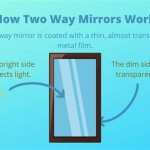Can You Mirror Mac To Samsung Smart TV? A Comprehensive Guide
Mirroring a Mac screen to a Samsung Smart TV allows for a seamless experience, whether for presentations, entertainment, or simply viewing content on a larger display. Several methods facilitate this process, each with its own advantages and disadvantages. Understanding these approaches is crucial for selecting the most suitable option based on individual needs and technical capabilities.
The ability to mirror a Mac to a Samsung Smart TV hinges on factors such as the Mac operating system version, the Samsung Smart TV model, and the available network infrastructure. While modern technology has simplified the process significantly, compatibility issues and network constraints can sometimes hinder a smooth connection. This article provides a detailed overview of various screen mirroring methods, troubleshooting tips, and considerations for optimal performance.
Understanding AirPlay 2 Compatibility
AirPlay 2, Apple's proprietary wireless streaming protocol, offers a native and integrated solution for mirroring a Mac screen to compatible devices. Samsung Smart TVs manufactured from 2018 onwards generally support AirPlay 2, making it a convenient option for Apple users. This built-in compatibility eliminates the need for third-party applications or external devices in many cases.
To verify AirPlay 2 support on a Samsung Smart TV, users can consult the TV's specifications or navigate to the settings menu. The presence of an AirPlay or Apple AirPlay settings section usually indicates compatibility. Additionally, ensuring that both the Mac and the Samsung Smart TV are connected to the same Wi-Fi network is essential for successful mirroring via AirPlay 2.
However, even with AirPlay 2 support, performance can be influenced by the network's bandwidth and the distance between the devices. A strong and stable Wi-Fi connection is recommended for seamless streaming, especially when mirroring high-resolution content such as videos or presentations with intricate graphics. Instances of lag or buffering may occur in environments with congested Wi-Fi networks.
The process of mirroring using AirPlay 2 involves selecting the AirPlay icon in the Mac's menu bar and choosing the desired Samsung Smart TV from the displayed list of available devices. Upon selection, a verification code may appear on the TV screen, requiring confirmation on the Mac to establish the connection. Once connected, the Mac's screen will be mirrored on the Samsung Smart TV.
Users can also adjust the mirroring settings to optimize the display. For example, options may be available to adjust the resolution, aspect ratio, and mirroring mode (e.g., mirroring the entire screen or extending the desktop). These settings can be accessed through the Mac's display preferences or the AirPlay menu.
Utilizing Third-Party Screen Mirroring Applications
In situations where AirPlay 2 is unavailable or encounters compatibility issues, third-party screen mirroring applications offer alternative solutions. These applications are designed to bridge the gap between different operating systems and devices, enabling Mac users to mirror their screens to Samsung Smart TVs without relying on native Apple protocols.
Numerous screen mirroring applications are available for download from the Mac App Store or directly from the developers' websites. Popular options include AirBeamTV, Reflector, and AnyCast. These applications typically require installation on both the Mac and in some cases an app on the Samsung Smart TV itself. The installation process usually involves downloading the application, granting the necessary permissions, and following the on-screen instructions.
The functionality of these applications often extends beyond simple screen mirroring. Many offer features such as audio streaming, remote control capabilities, and support for multiple display modes. Some applications also allow users to select specific windows or applications to mirror, rather than the entire screen, providing greater control over the content being displayed on the TV.
A key advantage of third-party applications is their potential to improve performance in scenarios where AirPlay 2 struggles due to network limitations or compatibility issues. Some applications employ advanced compression algorithms and streaming protocols to optimize the mirroring process, reducing lag and buffering. However, it's crucial to select reputable applications from trusted sources to avoid potential security risks or performance issues.
When choosing a third-party screen mirroring application, users should consider factors such as compatibility with their Mac operating system and Samsung Smart TV model, the range of features offered, the user interface, and the overall performance. Reading user reviews and testing free trial versions (if available) can help in making an informed decision.
The process of using a third-party screen mirroring application typically involves launching the application on both the Mac and the Samsung Smart TV, selecting the desired TV from a list of available devices, and initiating the mirroring process. The application may prompt for permissions to access the Mac's screen and audio. Once connected, the Mac's screen will be displayed on the Samsung Smart TV.
Exploring Wired Connection Options
While wireless screen mirroring offers convenience and flexibility, wired connections provide a more reliable and stable solution, particularly for high-bandwidth applications such as gaming or video editing. Connecting a Mac to a Samsung Smart TV via a wired connection eliminates the potential for Wi-Fi interference and network congestion, resulting in a smoother and more consistent mirroring experience.
The most common wired connection method involves using an HDMI cable. Most Macs feature an HDMI port or a Thunderbolt/USB-C port that can be adapted to HDMI using an adapter. Samsung Smart TVs also typically have multiple HDMI ports, allowing for easy connection to a Mac. Ensure that the HDMI cable supports the desired resolution and refresh rate for optimal display quality.
Connecting the Mac to the Samsung Smart TV via HDMI is a straightforward process. Simply plug one end of the HDMI cable into the Mac's HDMI port (or the appropriate adapter) and the other end into an available HDMI port on the TV. Then, select the corresponding HDMI input on the TV using the remote control or the TV's input selection menu.
Once the connection is established, the Mac should automatically detect the Samsung Smart TV as an external display. Users can then adjust the display settings in the Mac's system preferences to configure the arrangement, resolution, and mirroring mode. Options include mirroring the display, extending the desktop, or using the TV as the primary display.
A wired connection offers several advantages over wireless mirroring. The most significant benefit is the reduced latency, which is crucial for interactive applications such as gaming. Wired connections also provide a more stable connection, minimizing the risk of dropped connections or interruptions. However, the limitations include the need for a physical cable and the restriction of the Mac's mobility while connected.
It's essential to consider the resolution and refresh rate supported by both the Mac and the Samsung Smart TV. For example, if the Mac supports 4K resolution at 60Hz, but the TV only supports 4K at 30Hz, the display will be limited to the lower refresh rate. Selecting a compatible HDMI cable and configuring the display settings accordingly can ensure optimal image quality and performance.
In situations where the Mac lacks a direct HDMI port, a Thunderbolt/USB-C to HDMI adapter can be used. These adapters are widely available and provide a convenient way to connect modern Macs to HDMI-equipped displays. Ensure that the adapter supports the desired resolution and refresh rate to avoid any performance limitations.
Furthermore, users should consider the audio output settings when using a wired connection. By default, the Mac may output audio through its internal speakers. To route the audio through the Samsung Smart TV's speakers, users need to select the TV as the audio output device in the Mac's system preferences. This ensures that both the video and audio are displayed on the TV.
By understanding the various screen mirroring methods – AirPlay 2, third-party applications, and wired connections – users can choose the option that best suits their needs and technical capabilities. Each method offers its own advantages and disadvantages, and the optimal choice depends on factors such as compatibility, network infrastructure, and performance requirements.
Troubleshooting common screen mirroring issues can also improve the overall experience. Issues such as connection problems, lag, and poor image quality can often be resolved by restarting the devices, updating the software, checking the network connection, or adjusting the display settings. Regularly maintaining the software and hardware can help ensure a smooth and reliable screen mirroring experience between a Mac and a Samsung Smart TV.

How To Screen Mirror Mac Samsung Tv Step By Guide

Screen Mirror Mac To Samsung Tv Juststream

3 Instant Ways To Screen Mirror Mac Samsung Tv With Troubleshooting Pointerer Com

How To Mirror Mac Samsung Tv

Connect Hisense Tv To Apple Mac Wireless Screen Mirror App

How To Airplay Mirror Mac Samsung Smart Tv Without Apple Redmond Pie

How To Screen Mirror Mac Samsung Tv Step By Guide

How To Connect Mac Samsung Smart Tv A Quick Solution

Diffe Apps For Screen Mirroring Mac To Samsung Tv

How To Mirror Macbook Samsung Smart Tv








